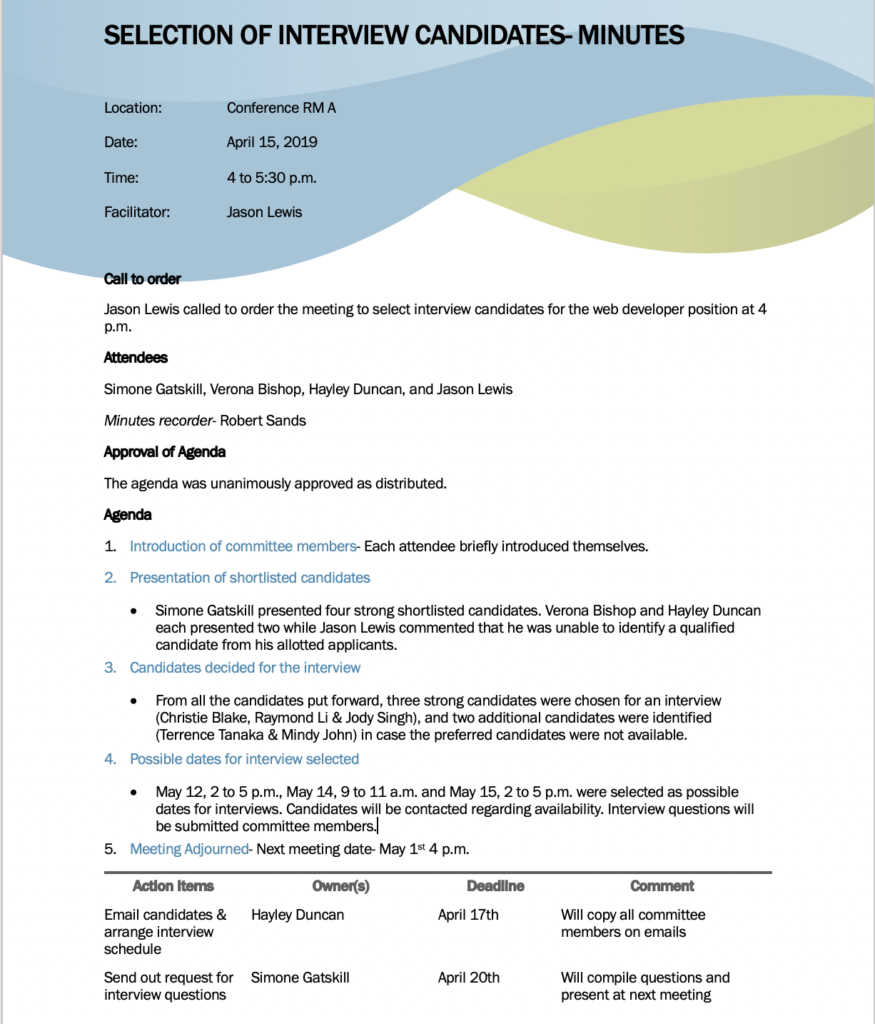16.4 Meeting Follow-up: The Minutes
A permanent record of the meeting’s discussion, known as “minutes,” summarizes major points raised, decisions taken, and actions assigned. A meeting participant who is especially fast a typing is usually assigned the role of recorder and adds bullet-point notes under each agenda item in the agenda soft copy to record the minutes. Action items should be highlighted since they are the main takeaways (e.g., “ACTION: Melinda to investigate new software for streamlining the job tendering process”). Emailed out to all participants afterwards, the minutes document serves not only as a reminder to those who attended, especially those tasked with action items, but can also be forwarded on to those who didn’t so they too can get a sense of decisions made and action items that may affect them. This is especially efficient if those non-attendees’ time is better used on other work rather than in a meeting. The document is usually considered tentative until officially approved at the next meeting, where it’s usually the first point on the agenda. If anyone noticed any inaccuracies in the previous meeting’s minutes, those are pointed out and corrected right away before the previous meeting’s minutes are approved and archived. Figure 16.1 provides an example of meeting minutes.


